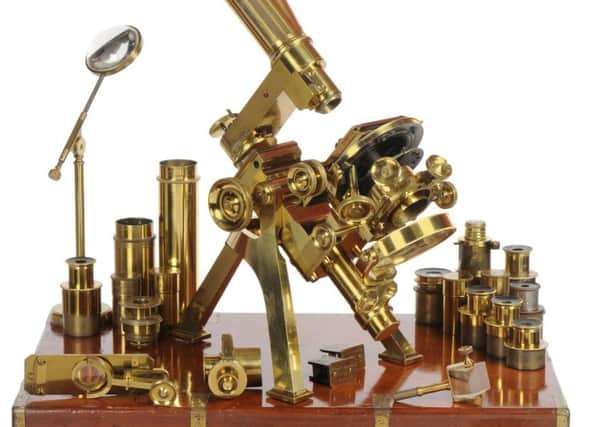Do you have an old microscope lurking in the attic?


Well, believe it or not, medical and scientific equipment is collected by some people and can sell for a lot of money.
We had a jar of Holloways Ointment in the centre the other week.
Advertisement
Hide AdAdvertisement
Hide AdIt was a Victorian essential and claimed to cure almost anything – ulcers, bed legs, rheumatism and gout!


It was on sale for £22 and someone snapped it up quickly. We even had a home enema kit for sale once.
I remember it clearly as it even had the cleaning instructions included and we all had a little giggle about where it may have come from and who had it last!
While these items may raise a smile, collecting them is a serious matter. This is not really a field of mass interest.
Advertisement
Hide AdAdvertisement
Hide AdUnlike, for example, pottery or porcelain where there are literally millions of potential buyers, the collection of scientific instruments and medical items is more specialised.
If you have an unusual, high quality and working scientific instrument, your piece could be worth hundreds or even thousands of pounds.
Man has always been fascinated by the world of science. In the past 100 years, there has been an explosion in the development of science and technology, it is no surprise then that old, scientific instruments have become internationally collectable items.
The world of medicine has produced hundreds of scientific instruments – the microscope is one of these.
Advertisement
Hide AdAdvertisement
Hide AdThey are fairly easy to find, being quite common and are often in working order.
They are reasonably common because every Victorian doctor would have owned one – there were no central testing laboratories back then, so each doctor carried out his own tests.
Lancashire is a good area for finding microscopes as they were also widely used in the mills.
Behind the doors of every mill house there would have been a state-of-the-art laboratory where raw materials and textiles were tested for strength, quality, warp and weft. A 1900 microscope would today cost £150-£250, in its own box.